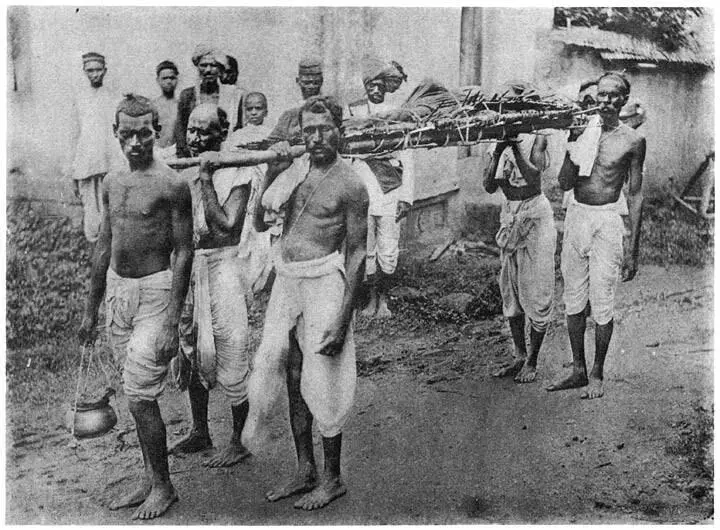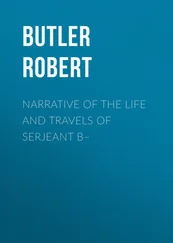Robert Vane Russell - The Tribes and Castes of the Central Provinces of India, Volume 4
Здесь есть возможность читать онлайн «Robert Vane Russell - The Tribes and Castes of the Central Provinces of India, Volume 4» — ознакомительный отрывок электронной книги совершенно бесплатно, а после прочтения отрывка купить полную версию. В некоторых случаях можно слушать аудио, скачать через торрент в формате fb2 и присутствует краткое содержание. Жанр: foreign_prose, История, foreign_edu, foreign_antique, на английском языке. Описание произведения, (предисловие) а так же отзывы посетителей доступны на портале библиотеки ЛибКат.
- Название:The Tribes and Castes of the Central Provinces of India, Volume 4
- Автор:
- Жанр:
- Год:неизвестен
- ISBN:нет данных
- Рейтинг книги:4 / 5. Голосов: 1
-
Избранное:Добавить в избранное
- Отзывы:
-
Ваша оценка:
- 80
- 1
- 2
- 3
- 4
- 5
The Tribes and Castes of the Central Provinces of India, Volume 4: краткое содержание, описание и аннотация
Предлагаем к чтению аннотацию, описание, краткое содержание или предисловие (зависит от того, что написал сам автор книги «The Tribes and Castes of the Central Provinces of India, Volume 4»). Если вы не нашли необходимую информацию о книге — напишите в комментариях, мы постараемся отыскать её.
The Tribes and Castes of the Central Provinces of India, Volume 4 — читать онлайн ознакомительный отрывок
Ниже представлен текст книги, разбитый по страницам. Система сохранения места последней прочитанной страницы, позволяет с удобством читать онлайн бесплатно книгу «The Tribes and Castes of the Central Provinces of India, Volume 4», без необходимости каждый раз заново искать на чём Вы остановились. Поставьте закладку, и сможете в любой момент перейти на страницу, на которой закончили чтение.
Интервал:
Закладка:
23. The Kunbi as cultivator
The Kunbi has the stolidity, conservative instincts, dulness and patience of the typical agriculturist. Sir R. Craddock describes him as follows 39 39 Nāgpur Settlement Report , para. 45.
: “Of the purely agricultural classes the Kunbis claim first notice. They are divided into several sections or classes, and are of Marātha origin, the Jhāri Kunbis (the Kunbis of the wild country) being the oldest settlers, and the Deshkar (the Kunbis from the Deccan) the most recent. The Kunbi is certainly a most plodding, patient mortal, with a cat-like affection for his land, and the proprietary and cultivating communities, of both of which Kunbis are the most numerous members, are unlikely to fail so long as he keeps these characteristics. Some of the more intelligent and affluent of the caste, who have risen to be among the most prosperous members of the community, are as shrewd men of business in their way as any section of the people, though lacking in education. I remember one of these, a member of the Local Board, who believed that the land revenue of the country was remitted to England annually to form part of the private purse of the Queen Empress. But of the general body of the Kunbi caste it is true to say that in the matter of enterprise, capacity to hold their own with the moneylender, determination to improve their standard of comfort, or their style of agriculture, they lag far behind such cultivating classes as the Kirār, the Rāghvi and the Lodhi. While, however, the Kunbi yields to these classes in some of the more showy attributes which lead to success in life, he is much their superior in endurance under adversity, he is more law-abiding, and he commands, both by reason of his character and his caste, greater social respect among the people at large. The wealthy Kunbi proprietor is occasionally rather spoilt by good fortune, or, if he continues a keen cultivator, is apt to be too fond of land-grabbing. But these are the exceptional cases, and there is generally no such pleasing spectacle as that afforded by a village in which the cultivators and the proprietors are all Kunbis living in harmony together.” The feeling 40 40 The references to English farming in this paragraph are taken from an article in the Saturday Review of 22nd August 1908.
of the Kunbi towards agricultural improvements has hitherto probably been something the same as that of the Sussex farmer who said, ‘Our old land, it likes our old ploughs’ to the agent who was vainly trying to demonstrate to him the advantages of the modern two-horse iron plough over the great wooden local tool; and the emblem ascribed to old Sussex—a pig couchant with the motto ‘I wun’t be druv’—would suit the Kunbi equally well. But the Kunbi, too, though he could not express it, knows something of the pleasure of the simple outdoor life, the fresh smell of the soil after rain, the joy of the yearly miracle when the earth is again carpeted with green from the bursting into life of the seed which he has sown, and the pleasure of watching the harvest of his labours come to fruition. He, too, as has been seen, feels something corresponding to “That inarticulate love of the English farmer for his land, his mute enjoyment of the furrow crumbling from the ploughshare or the elastic tread of his best pastures under his heel, his ever-fresh satisfaction at the sight of the bullocks stretching themselves as they rise from the soft grass.”

Carrying out the dead
24. Social and moral characteristics
Some characteristics of the Marātha people are noticed by Sir R. Jenkins as follows 41 41 Report on the Territories of the Rāja of Nāgpur .
: “The most remarkable feature perhaps in the character of the Marāthas of all descriptions is the little regard they pay to show or ceremony in the common intercourse of life. A peasant or mechanic of the lowest order, appearing before his superiors, will sit down of his own accord, tell his story without ceremony, and converse more like an equal than an inferior; and if he has a petition he talks in a loud and boisterous tone and fearlessly sets forth his claims. Both the peasantry and the better classes are often coarse and indelicate in their language, and many of the proverbs, which they are fond of introducing into conversation, are extremely gross. In general the Marāthas, and particularly the cultivators, are not possessed of much activity or energy of character, but they have quick perception of their own interest, though their ignorance of writing and accounts often renders them the dupes of the artful Brāhmans.” “The Kunbi,” Mr. Forbes remarks, 42 42 Rāsmālā , ii. 242.
“though frequently all submission and prostration when he makes his appearance in a revenue office, is sturdy and bold enough among his own people. He is fond of asserting his independence and the helplessness of others without his aid, on which subject he has several proverbs, as: ‘Wherever it thunders there the Kunbi is a landholder,’ and ‘Tens of millions are dependent on the Kunbi, but the Kunbi depends on no man.’” This sense of his own importance, which has also been noticed among the Jāts, may perhaps be ascribed to the Kunbi’s ancient status as a free and full member of the village community. “The Kunbi and his bullocks are inseparable, and in speaking of the one it is difficult to dissociate the other. His pride in these animals is excusable, for they are most admirably suited to the circumstances in which nature has placed them, and possess a very wide-extended fame. But the Kunbi frequently exhibits his fondness for them in the somewhat peculiar form of unmeasured abuse. ‘May the Kāthis 43 43 A freebooting tribe who gave their name to Kāthiawār.
seize you!’ is his objurgation if in the peninsula of Surat; if in the Idar district or among the mountains it is there ‘May the tiger kill you!’ and all over Gujarāt, ‘May your master die!’ However, he means by this the animal’s former owner, not himself; and when more than usually cautious he will word his chiding thus—‘May the fellow that sold you to me perish.’” But now the Kāthis raid no more and the tiger, though still taking good toll of cattle in the Central Provinces, is not the ever-present terror that once he was. But the bullock himself is no longer so sacrosanct in the Kunbi’s eyes, and cannot look forward with the same certainty to an old age of idleness, threatened only by starvation in the hot weather or death by surfeit of the new moist grass in the rains; and when therefore the Kunbi’s patience is exhausted by these aggravating animals, his favourite threat at present is, ‘I will sell you to the Kasais’ (butchers); and not so very infrequently he ends by doing so. It may be noted that with the development of the cotton industry the Kunbi of Wardha is becoming much sharper and more capable of protecting his own interests, while with the assistance and teaching which he now receives from the Agricultural Department, a rapid and decided improvement is taking place in his skill as a cultivator.
Kunjra
Kunjra. 44 44 This article is partly based on papers by Nanhe Khān, Sub-Inspector of Police, Khurai, Saugor, and Kesho Rao, Headmaster, Middle School, Seoni-Chhapāra.
—A caste of greengrocers, who sell country vegetables and fruit and are classed as Muhammadans. Mr. Crooke derives the name from the Sanskrit kunj , ‘a bower or arbour.’ They numbered about 1600 persons in the Central Provinces in 1911, principally in the Jubbulpore Division. The customs of the Kunjras appear to combine Hindu and Muhammadan rites in an indiscriminate medley. It is reported that marriage is barred only between real brothers and sisters and foster brothers and sisters, the latter rule being known as Dudh bachāna , or ‘Observing the tie of the milk.’ At their betrothal presents are given to the parties, and after this a powder of henna leaves is sent to the boy, who rubs it on his fingers and returns it to the girl that she may do the same. As among the Hindus, the bodies of the bridal couple are anointed with oil and turmeric at their respective houses before the wedding. A marriage-shed is made and the bridegroom goes to the bride’s house wearing a cotton quilt and riding on a bullock. The barber holds the umbrella over his head and must be given a present before he will fold it, but the wedding is performed by the Kāzi according to the Nikāh ceremony by the repetition of verses from the Korān. The wedding is held at four o’clock in the morning, and as a preliminary to it the bride is presented with some money by the boy’s father, which is known as the Meher or dowry. On its conclusion a cup of sherbet is given to the bridegroom, of which he drinks half and hands the remainder to the bride. The gift of the Meher is considered to seal the marriage contract. When a widow is married the Kāzi is also employed, and he simply recites the Kalama or Muhammadan profession of belief, and the ceremony is completed by the distribution of dates to the elders of the caste. Divorce is permitted and is known as talāq . The caste observe the Muhammadan festivals, and have some favourite saints of their own to whom they make offerings of gulgula a kind of pudding, with sacrifices of goats and fowls. Participation in these rites is confined to members of the family. Children are named on the day of their birth, the Muhammadan Kāzi or a Hindu Brāhman being employed indifferently to select the name. If the parents lose one or more children, in order to preserve the lives of those subsequently born, they will allow the choti or scalp-lock to grow on their heads in the Hindu fashion, dedicating it to one of their Muhammadan saints. Others will put a hasli or silver circlet round the neck of the child and add a ring to this every year; a strip of leather is sometimes also tied round the neck. When the child reaches the age of twelve years the scalp-lock is shaved, the leather band thrown into a river and the silver necklet sold. Offerings are made to the saints and a feast is given to the friends of the family. The dead are buried, camphor and attar of roses being applied to the corpse. On the Tīja and Chālisa , or third and fortieth days after a death, a feast is given to the caste-fellows, but no mourning is observed, neither do the mourners bathe nor perform ceremonies of purification. On the Tīja the Korān is also read and fried grain is distributed to children. For the death of a child the ordinary feasts need not be given, but prayers are offered for their souls with those of the other dead once a year on the night of Shab-i-Barāt or the fifteenth day of the month Shabān, 45 45 Literally ‘The Month of Separatica.’ It is the eighth month of the Muhammadan year and is said to be so called because in this month the Arabs broke up their encampments and scattered in search of water. On the night of Shab-i-Barāt God registers all the actions of men which they are to perform during the year; and all the children of men who are to be born and die in the year are recorded. Though properly a fast, it is generally observed with rejoicings and a display of fireworks. Hughes’ Dictionary of Islam , p. 570.
which is observed as a vigil with prayer, feasts and illuminations and offerings to the ancestors. Kunjra men are usually clean-shaven with the exception of the beard, which is allowed to grow long below the chin. Their women are not tattooed. In the cities, Mr. Crooke remarks, 46 46 Tribes and Castes of the N.W.P., art. Kunjra.
their women have an equivocal reputation, as the better-looking girls who sit in the shops are said to use considerable freedom of manners to attract customers. They are also very quarrelsome and abusive when bargaining for the sale of their wares or arguing with each other. This is so much the case that men who become very abusive are said to be behaving like Kunjras; while in Dacca Sir H. Risley states 47 47 Tribes and Castes of Bengal , ibidem .
that the word Kunjra has become a term of abuse, so that the caste are ashamed to be known by it, and call themselves Mewa-farosh, Sabzi-farosh or Bepāri. When two women are having an altercation, their husbands and other male relatives are forbidden to interfere on pain of social degradation. The women never sit on the ground, but on small wooden stools or pīrhis . The Kunjras belong chiefly to the north of the Province, and in the south their place is taken by the Marārs and Mālis who carry their own produce for sale to the markets. The Kunjras sell sugarcane, potatoes, onions and all kinds of vegetables, and others deal in the dried fruits imported by Kābuli merchants.
Интервал:
Закладка:
Похожие книги на «The Tribes and Castes of the Central Provinces of India, Volume 4»
Представляем Вашему вниманию похожие книги на «The Tribes and Castes of the Central Provinces of India, Volume 4» списком для выбора. Мы отобрали схожую по названию и смыслу литературу в надежде предоставить читателям больше вариантов отыскать новые, интересные, ещё непрочитанные произведения.
Обсуждение, отзывы о книге «The Tribes and Castes of the Central Provinces of India, Volume 4» и просто собственные мнения читателей. Оставьте ваши комментарии, напишите, что Вы думаете о произведении, его смысле или главных героях. Укажите что конкретно понравилось, а что нет, и почему Вы так считаете.












